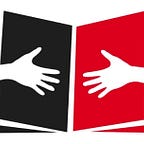Cholera: not just a ‘water problem’
By: Kai Fan
A little over a year ago, in October 2016, cholera broke out in Yemen on the southern end of the Arabian Peninsula. This outbreak soon developed into one of the largest and fastest-spreading cholera epidemics in modern history. Over the last seven months, cholera has claimed the lives of 2 252 people in Yemen, with over 1 050 000 suspected cases and counting. It has taken less than a year for Yemen’s current epidemic to surpass Haiti’s cholera outbreak from seven years ago, which resulted in roughly 800 000 total documented cholera cases. With Yemen in the midst of a war, this cholera outbreak is an additional pressing burden on the country.
Cholera is an infectious disease caused by the bacterium Vibrio cholera. The infection affects the small intestines. This bacteria is often found in human feces, and is spread through ingestion of contaminated water and food. Cholera victims often experience profuse diarrhea and vomiting. If left untreated, victims can suffer from severe dehydration and electrolyte imbalances, resulting in death. The spread of cholera is magnified by political and economic conditions such as poor sanitation, poverty, and a lack of clean water. Therefore, cholera tends to affect low-income or war-torn countries, where there is a lack of available health infrastructure such as hospitals and clinics.
In January 2010, Haiti suffered a massive earthquake that displaced millions and destroyed much of its water and sanitation infrastructure. Many Haitians sought refuge in temporary camps with poor access to clean water, resulting in cholera outbreaks that killed more than 10,000 people. Partners in Health (PIH) was among the first organizations to deal with this crisis, opening cholera treatment facilities, running public health campaigns focused on hygiene and collaborating with the local Ministry of Health to deliver treatments and vaccinations in cholera-affected areas in Haiti. PIH’s initiatives still continue to this day.
In comparison to Haiti, where the earthquake and its aftermath aggravated the cholera crisis, Yemen’s outbreak has been exacerbated by the ongoing Yemeni civil war which erupted in 2015. This war is a result of a conflict between three sides: the Houthi rebels loyal to Yemen’s former president (supported by Iran), a Saudi-led coalition backing the internationally recognized Yemeni government (supported by the United States), and the Islamic State of Iraq and Syria (ISIS).
As the fighting intensifies across the country, more and more civilians are being displaced, injured or killed. Right now, international and Yemeni health workers are diverting focus to emergency health provision in response to the increased casualties. As of 2017, WHO estimates that less than 45% of Yemen’s health facilities are fully functional and at least 274 facilities have been damaged or destroyed during the conflict. In an attempt to prevent weapons and supplies from reaching the Houthi rebels, the Saudi-led coalition closed off Yemen’s highways, airports, and sea shipping routes. The resulting logistical blockades hampered the delivery of humanitarian relief supplies (even simple supplies like chlorine tablets for water purification) into Yemen. In the absence of formal rescue services, many Yemenis have had to dig out their loved ones from the rubble of damaged buildings to seek health treatment. Without access to clean water, health professionals, or medical supplies, cholera spread and quickly became an epidemic.
With the right systems in place, cholera is treatable and preventable. In regions with well-functioning water and health infrastructures, cholera is no longer a major health threat in the 21st century. However, when faced with conflict-induced barriers to healthcare and systemic barriers in access to health services, cholera becomes a public health and humanitarian disaster of massive proportions.
Still, despite its challenges, there are inexpensive methods to filter cholera-infested water using domestic materials. One such method — cloth filtering — has been documented as early as 2002 in Bangladesh (source). In this particular study, inexpensive sari cloth that is folded four to eight times can provide a filter to remove a significant proportion of microorganisms containing cholera bacteria. While cloth filtering does not remove 100% of the cholera bacteria, and is still inferior to boiling water before drinking, cloth filtering is inexpensive and can be readily applied during outbreaks in areas with poor access to services.
Like many diseases, prevention is a critical component to a comprehensive mitigation strategy. Very often, prevention is achieved through widespread vaccination. However, cholera vaccination efforts can be impeded by logistical challenges and public beliefs. Recalling on PIH’s experience in Haiti, vaccination campaigns had trouble taking off because public opinion questioned the vaccines’ effectiveness when used with already-infected populations. Despite the initial setback, PIH’s community vaccination efforts managed to significantly reduce cholera cases when administered en masse to the Haitian population, and shifted public perceptions to become favourable for vaccine usage in cholera-fighting strategies around the world. Since 2012, the World Health Organization has begun stockpiling cholera vaccines for future outbreaks.
While individual solutions can be feasible, epidemics like cholera often require a larger, long-term change. NGOs, governments, and other aid organizations need to collectively address a region’s fundamental problems like economic growth or socio-political tensions in order to effectively reduce the spread of disease.
